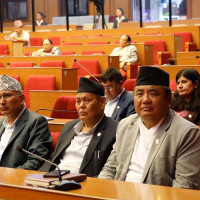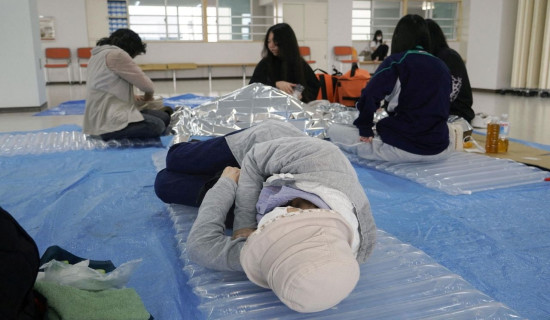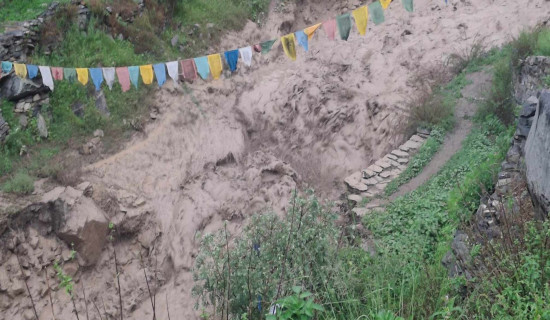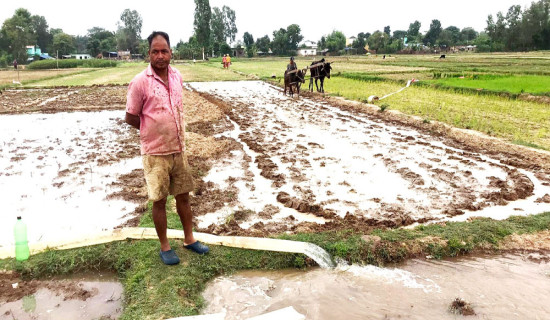- Thursday, 31 July 2025
Boeing Crash Raises Safety Concerns
The crash of a Boeing 787-8 Dreamliner belonging to Air India into a bustling area near the Ahmedabad Airport in Gujarat State of India on June 12 has raised serious air safety concerns not only in India but worldwide. The accident left all but one of the 242 people aboard the London-bound plane dead, while many others are believed to have been killed on the ground. The ill-fated flight collided with a medical college hostel building just seconds after its take-off. Experts have called for strict enforcement of safety management systems to address all safety hazards thoroughly. Aviation safety is a multi-stage process that covers pre-flight, in-flight and post-flight procedures.
Former Chief Minister of Gujarat, Vijay Rupani, was among the deceased. He was travelling on the same flight to London to meet his daughter. However, one passenger was lucky enough to survive the deadly crash as he was able to walk out of the rubble after exiting the emergency door of the aircraft. Most passengers were Indian. There were 53 British nationals, seven Portuguese, and one Canadian onboard. The cause of the crash is unknown yet. India's Aircraft Accident Investigation Bureau has started carrying out an investigation into the accident following the retrieval of the plane’s black box.
Probe
The wide-body aircraft’s manufacturer, Boeing, has promised to extend necessary support to the probe body as well as Air India for the investigation. Dubbed as one of the worst air accidents in a decade, it is the first of its kind for the popular long-haul Dreamliner 787 since its launch in 2011. With this crash, the reputation of Air India as well as aircraft manufacturing giant Boeing has been tarnished. The catastrophe has also reduced the level of confidence among passengers. Journey by air is considered to be the safest. However, the world has recorded numerous air crashes and their resulting fatalities in recent years, with remarkable growth in the number of aircraft.
The number of annual passengers increased to 4.5 billion by 2019 from 1.7 billion in 2000. This growth is attributed to economic globalisation, diversification of tourism, and the development of low-cost carriers worldwide. But, global air traffic fell sharply in 2020 because countries had to impose lockdowns and other travel restrictions in order to contain the transmission of the COVID-19 pandemic. With the launch of vaccination campaigns, air traffic began recovering in 2021. Now, passenger numbers in most regions have surged considerably. This growth is natural because of the ever-increasing demand for air transport globally.
Even when the airspace is increasingly becoming contested, there are fewer chances of collision because of the fast and continuous advancement in aviation technology. There has been an increased role of technologies in the aviation sector. With increased use of artificial intelligence (AI), improved navigation and the development of aircraft with fuel-efficient engines, the aviation sector has gone through a major transformation over the decades. But air crashes seem to have been a common occurrence. Experts point to mechanical and human errors as leading factors behind such disasters. There should be convergence between the traditional maintenance system and the monitoring system to ensure air safety.
Having been ‘stunned and saddened’ by the crash, world leaders have expressed their deep sorrow over it. Nepali leaders, including President Ram Chandra Paudel and Prime Minister KP Sharma Oli, have also expressed their grief over the loss of lives. They have extended their heartfelt condolences to the victims and their families. All the nations, including Nepal, must take the Ahmedabad air crash as an important wake-up call and step up necessary measures for enhancing air safety. That air crash is not only a concern for India but for the entire world. This calls for making desired reforms in the field of aviation safety as a whole. Concerned aviation authorities, airlines and aircraft manufacturers must put air safety at the centre. They must also be held accountable for failing to carry out their responsibilities effectively.
With its difficult mountain terrains and erratic weather conditions, Nepal also sees air crashes frequently. It is sad to note that the nation has lost more than 360 lives in different air accidents during the past 15 years or so. Records show that the country has so far recorded nearly 960 deaths in 108 various air crashes. Although the Civil Aviation Authority of Nepal (CAAN) has implemented the National Aviation Safety Plan (NASP) to improve air safety, much remains to be done. Every successive government seems to have pledged to make headway in air safety. But, most of their pledges have been limited only to lip service.
Outstanding issue
The European Union (EU) has put Nepal on its air safety blacklist since December 2013, showing its concerns about the country’s aviation safety standards and the structure of the CAAN. No Nepali airlines, including the national flag carrier Nepal Airlines Corporation (NAC), are allowed to use the European airspace. This ban has dealt a serious blow to Nepal’s tourism industry and damaged the country’s international image. The 27-nation bloc has refused to free Nepali airlines from its blacklist. The entire aviation system of the country must be reviewed to ensure air safety.
However, the government of Nepal is determined to get the country off the EU’s air safety list. In its budget for the fiscal year 2025-26, the government has vowed to do so. As demanded by the EU, the government is in the process of splitting the CAAN into a regulatory entity and a service provider. For this, two bills have already been registered in the federal parliament. This outstanding issue is likely to be resolved soon, considering the government’s commitment.
(The author is a former deputy executive editor of this daily.)



-original-thumb.jpg)



-square-thumb.jpg)









